How to grow garlic
You don’t need much space to grow garlic at home. Low effort and high reward, garlic is guaranteed to add delicious flavour to any home cooked meal.
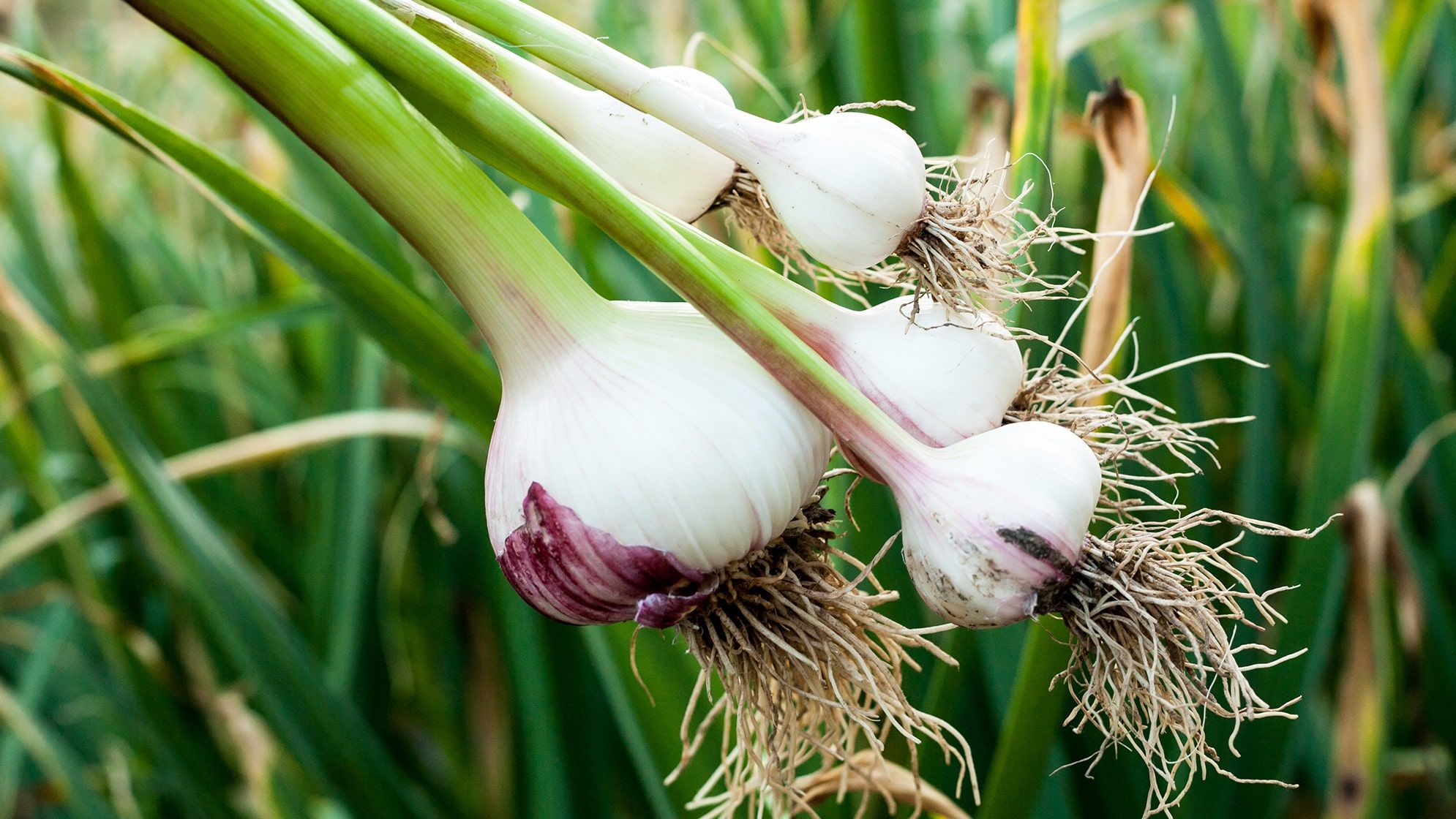
From spacious gardens to small balconies, you can grow garlic on any patch of soil that gets plenty of light. All you need is a bulb of garlic. Here are the basics to get you started:
- Plant your garlic in late autumn through to early spring, they’ll use the winter months as a chilling period to develop their bulbs
- They like to be pretty dry so choose soil that drains well and is pH neutral
- Add some fertiliser before you plant to boost their growth
- Water lightly through the summer to keep the soil moist
- Pluck away any nasty weeds
- Harvest in the summer, from July onwards
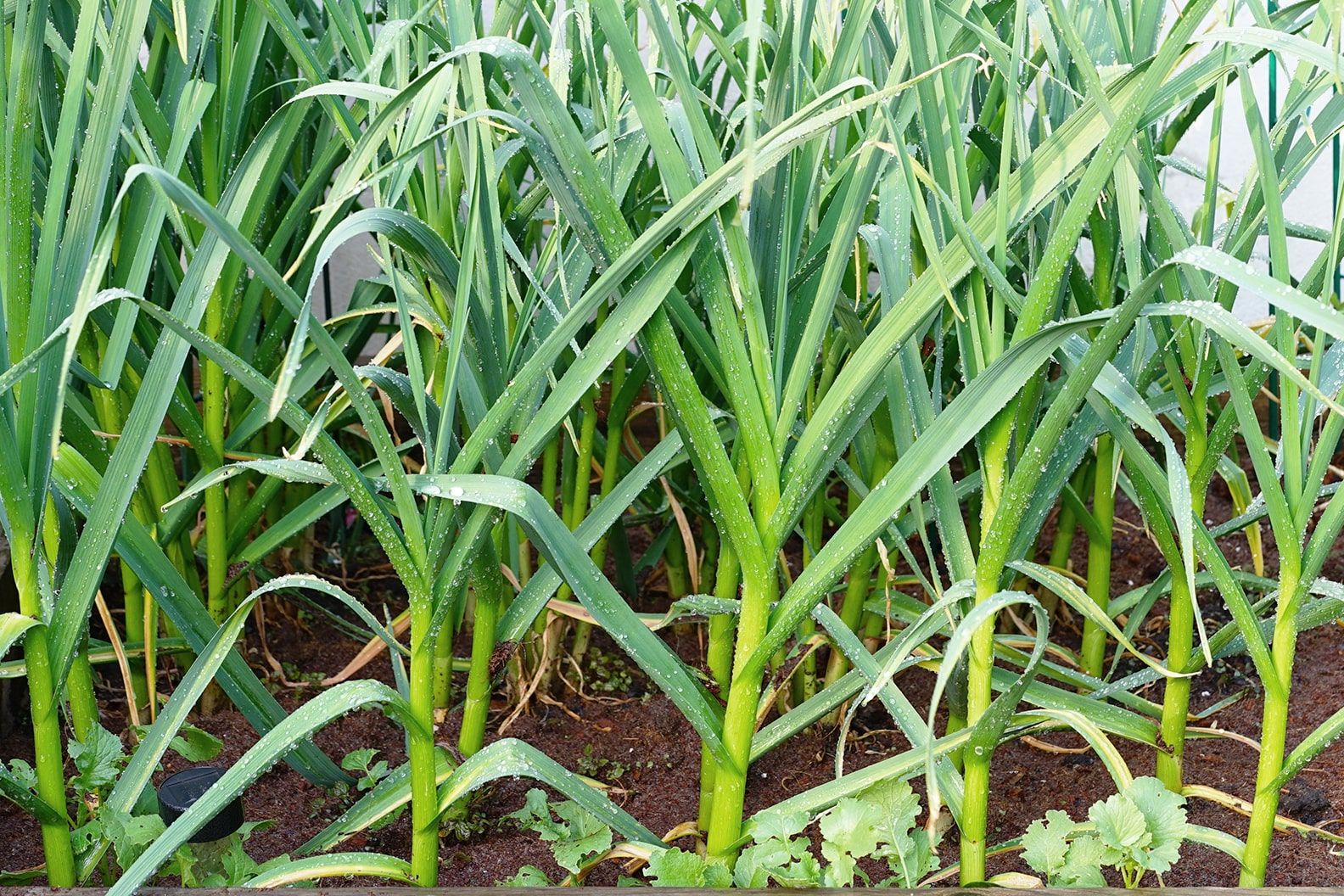
When to plant garlic
The best time to plant garlic is in late autumn through to early spring. Garlic doesn’t fare well with high humidity or wet soils, so whether you’re planting straight in the ground, into a planter or even a pot, make sure it’s somewhere that has good drainage where the sun can reach the soil to dry it out.
The best soil for growing garlic
Garlic is a forgiving crop and will grow in most pH neutral soil, as long as water can drain quickly or evaporate in the sun. Just make sure you mix in plenty of compost to give your bulbs the nutrients they need.
A bit of sand can help loosen dense soil to let excess water escape. Add a little fertiliser for extra luck when you’re ready to plant – around 25g per square metre will do, or double if you didn’t use any compost.
If you’re planting straight into your garden bed, add garden lime in the autumn and winter to help reduce acidity.
How to plant garlic
Carefully peel off the flakey outer layer of skin, then separate the cloves, keeping the remaining skin intact. Push each clove about an inch or 2.5cm deep into your soil, making sure you leave 15cm of space between them so they have enough space to grow. Easy!
If you’re using small pots, we recommend planting just one clove per pot.
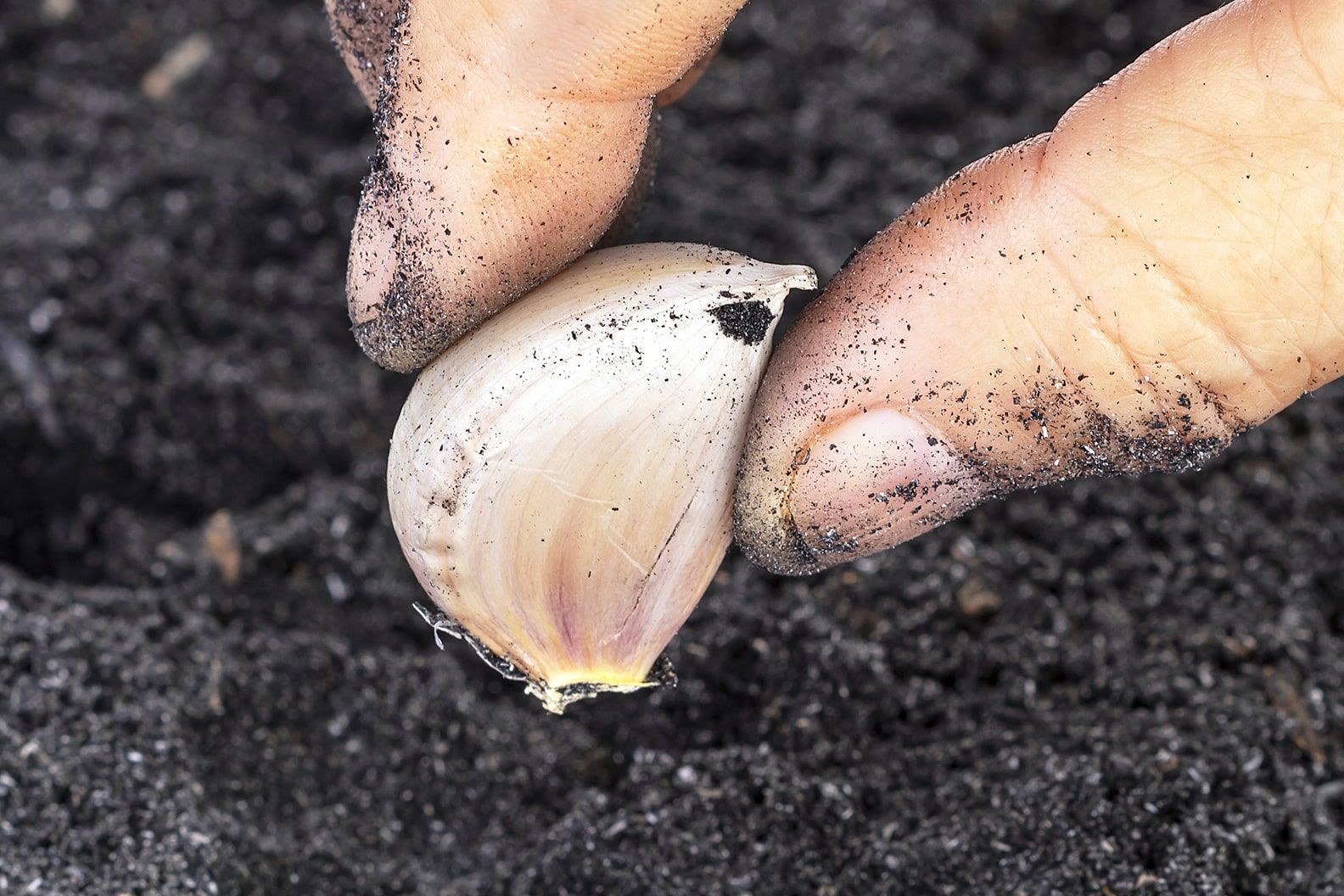
How to look after your garlic plant
Protect your garlic bulbs over the cold winter months by adding a light layer of mulch (like grass clippings, leaves, shredded newspaper or wood chips) on top. The aim is to keep the soil moist without letting cold snow or rain in. But keep the mulch to a minimum, because a short chilling period of around 0-10°C helps the bulbs develop.
When your garlic leaves poke through, they’ll look slim, bright green and pointed at the top. Any other leaves are probably weeds. Pull them out carefully so your garlic doesn’t have to compete for nutrients.
Water your garlic when the soil feels dry. If the tops of your garlic leaves go yellow, this could be a sign that you’re overwatering.
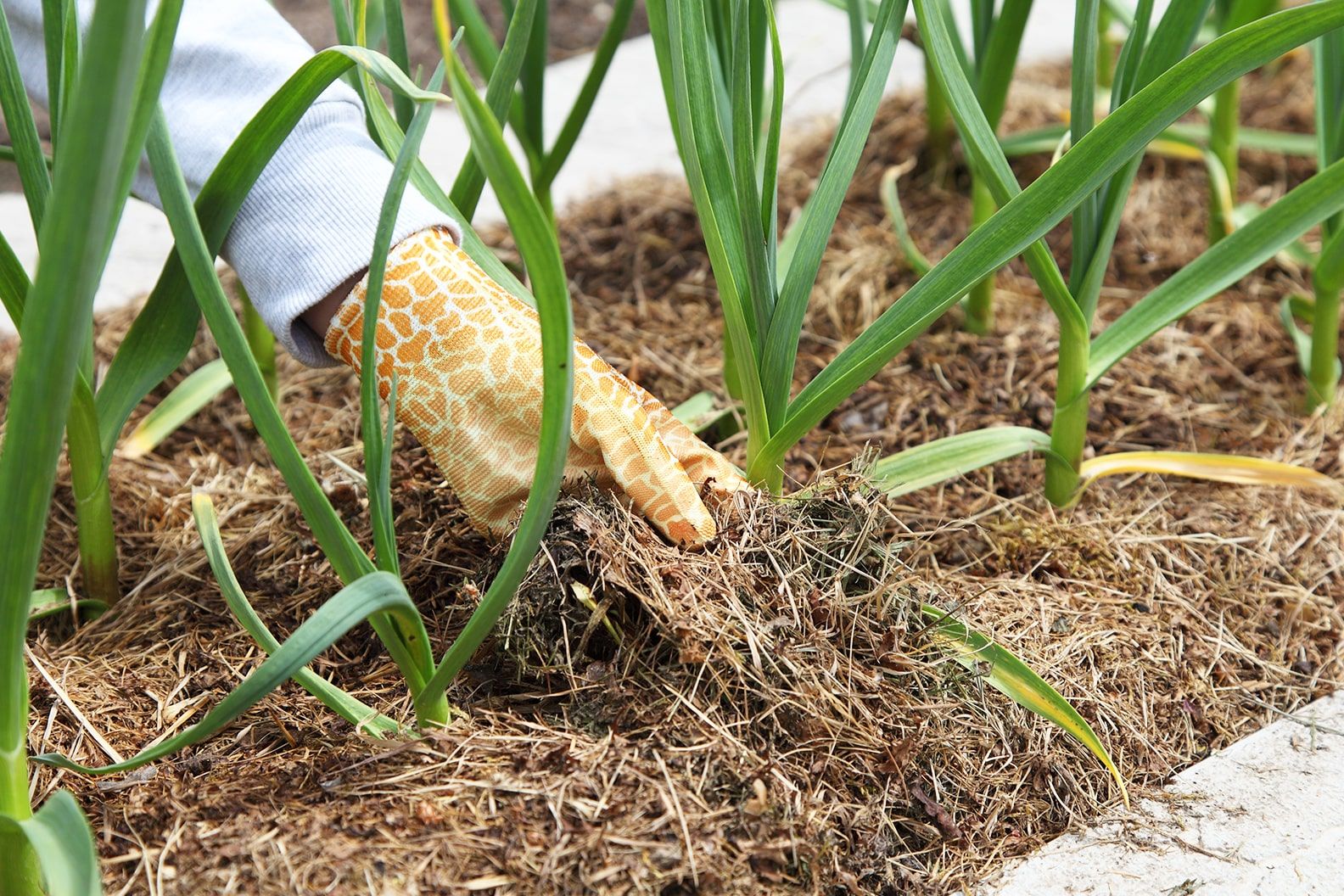
Dealing with pests
Garlic is pretty resistant to pests, but they can get a bit of leek rust in wet weather. Leek rust starts off as small bumpy spots before killing the leaves and stopping the growth of your garlic. If you notice this fungal infection taking hold, it’s time to harvest. The garlic bulbs will be perfectly safe to eat but it’s best to remove the infected bulbs right away before the rust spreads to the others.
How to harvest garlic
Harvest time for garlic starts around July and lasts throughout the summer. When the leaves start to turn yellow, carefully lift out the bulbs with your hands, a fork or a trowel. Start with one bulb to test if the others are ready. Once harvested, leave the bulbs to dry in the sun for a couple of days, and then enjoy them as soon as you can. Remember to keep a bulb to one side so you can plant it again for the next year.
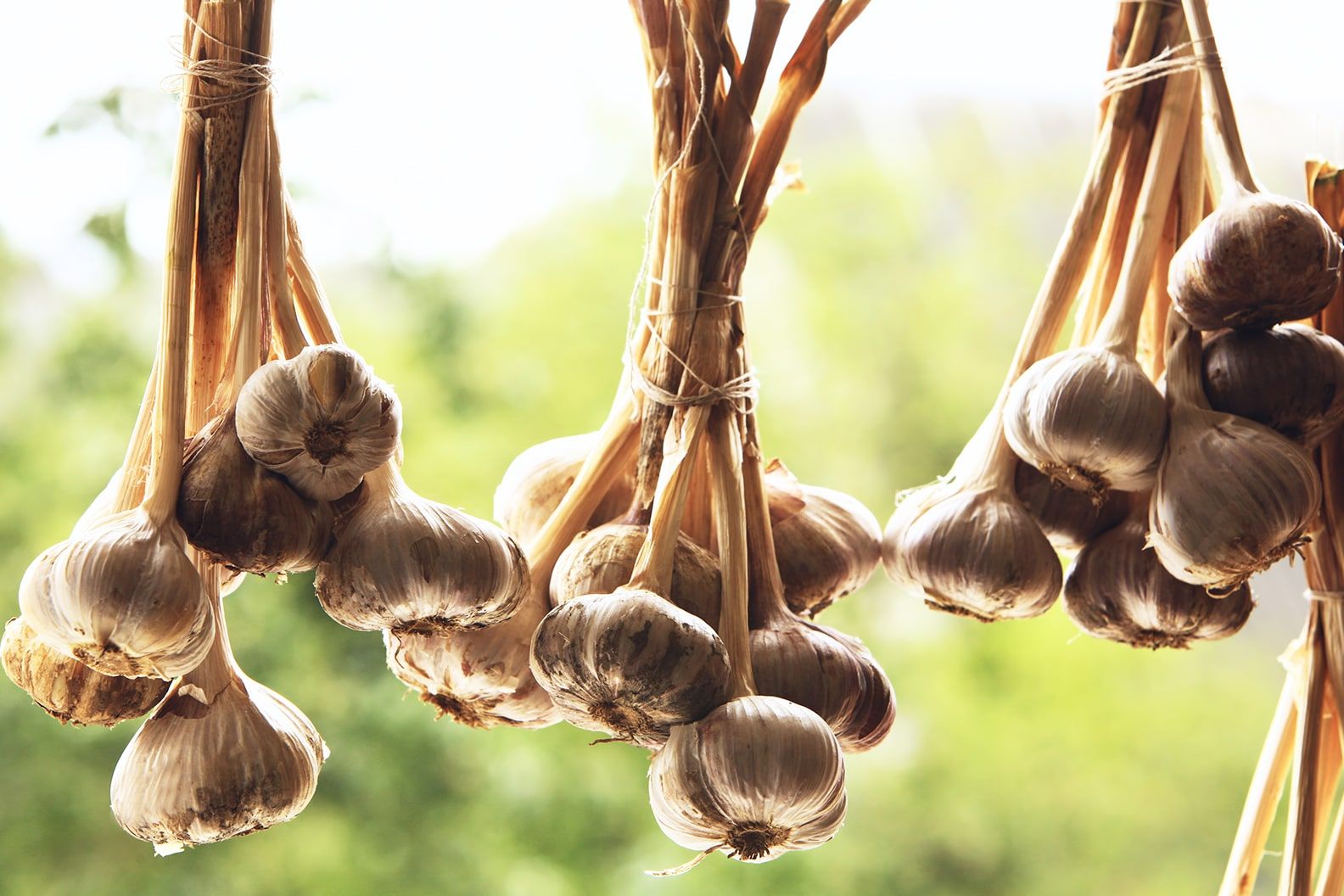
How to use garlic
Roast a whole head of garlic, then mix with butter and thyme, and rub it onto flatbreads for easy homemade garlic bread.
If your garlic produces any flowers, pick these off the leaves and use them as pretty garnishes in a stir fry.
Rewild your inbox
Plant tips. Special offers. No spam.
You might like

How to grow tomatoes
It’s a tasty business
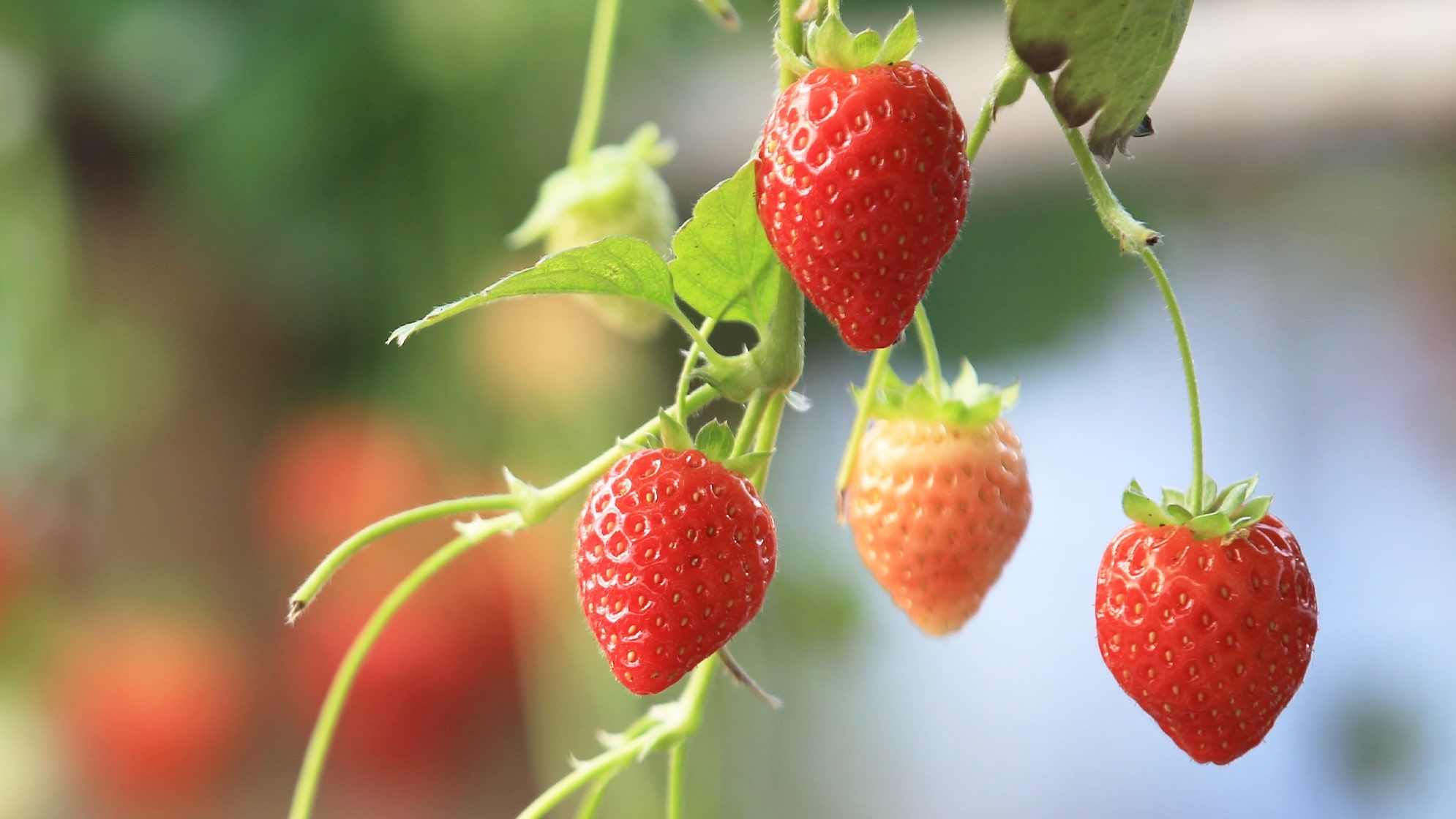
How to grow strawberries
Get into the summer spirit and grow your own strawberries.

Plant a rainbow
9 houseplants that go beyond green
